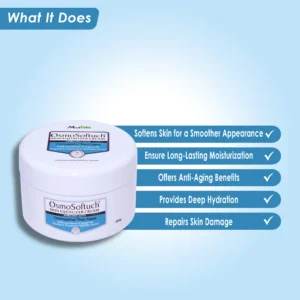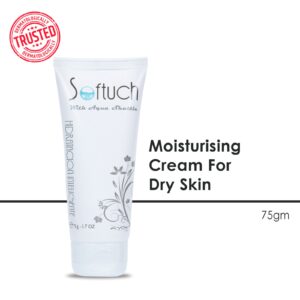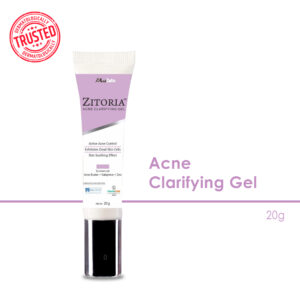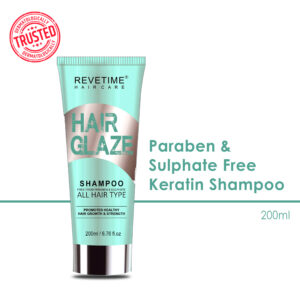The Complete Guide to Balancing Sebum Production for Healthy, Glowing Skin

The Complete Guide to Balancing Sebum Production for Healthy, Glowing Skin
Achieve Balanced Sebum Production for Radiant, Healthy Skin
Discover effective techniques to balanced sebum production for clear, glowing skin. Learn about the significance of sebum, management strategies, factors influencing production, and practical and tips for maintaining skin health.
Introduction:
Welcome to our detailed guide on achieving balanced sebum production for radiant and healthy skin. Throughout this guide, we’ll cover the significance of sebum, effective management techniques, effective skin care product, factors that influence its production, strategies for achieving balance, and practical steps for maintaining clear and glowing skin.
Understanding Sebum:
Sebum, often called skin oil, is a crucial component of our skin’s natural barrier, acting as a protective layer against environmental aggressors and moisture loss. It primarily comprises lipids, including triglycerides, wax esters, and squalene, which help lubricate and waterproof the skin’s surface. This natural oil regulates moisture levels, prevents dehydration, and maintains skin suppleness. Sebaceous glands, responsible for sebum production, are found throughout the body, with higher concentrations on the face, scalp, chest, and back. These glands are the most active during puberty due to hormonal fluctuations but continue functioning throughout life to support skin health. Understanding sebum’s functions and distribution is essential for implementing effective skin care product routines tailored to individual needs and maintaining optimal skin health.
Managing Sebum Production:
Achieving balanced sebum production is essential for maintaining healthy skin. Here are some key tips and techniques to effectively manage sebum production:
-
Regular Cleansing:
Regular cleansing removes excess oil, dirt, and impurities from the skin’s surface. Choose a gentle cleanser suitable for your skin type and cleanse your face twice daily to keep pores clear and prevent sebum buildup.
-
Benefits of Exfoliation:
Incorporating exfoliation into your skin care products routine helps remove dead skin cells, unclog pores, and promote skin renewal. Opt for a gentle exfoliator soap with salicylic acid or glycolic acid to control sebum production and reveal smoother, clearer skin.
-
Choosing the Right Moisturizer:
Selecting the best face moisturizer is key to maintaining balanced sebum production. Look for oil-free or non-comedogenic formulas that provide hydration without clogging pores. Ingredients like hyaluronic acid help hydrate the skin without adding excess oil while mattifying ingredients like niacinamide regulate sebum production.
Factors Affecting Sebum Production:
A variety of factors, both internal and external, influence sebum production. Understanding these factors is crucial for managing sebum levels and promoting skin health. Here are some key influencers:
-
Hormonal Fluctuations:
Hormonal changes, particularly during puberty, menstruation, pregnancy, and menopause, significantly impact sebum production. Increased androgen levels stimulate sebaceous glands, producing excess oil and potentially resulting in acne flare-ups.
-
Genetic Predispositions:
Genetics plays a role in determining sebum production levels. Individuals with a family history of oily skin are more likely to have overactive sebaceous glands, contributing to oilier skin and potential skin issues like acne.
-
Dietary Influences:
Diet affects sebum production, with certain foods increasing or decreasing oiliness. Foods high in sugar and refined carbohydrates stimulate insulin production, possibly triggering sebum production. On the other hand, a diet rich in omega-3 fatty acids, antioxidants, and vitamins A and E helps regulate sebum production and promote healthier skin.
-
Stress:
Psychological stress impacts hormone levels, particularly cortisol, which may stimulate sebaceous glands and increase sebum production. Chronic stress exacerbates skin conditions like acne and contributes to an imbalance in sebum levels.
-
Environmental Factors:
Environmental factors like heat, humidity, and pollution influence sebum production. Hot and humid conditions cause the skin to produce more oil to regulate temperature and maintain hydration levels. Pollution particles also accumulate on the skin, leading to inflammation and potentially affecting sebum production.
Strategies to Balance Sebum Production:
Balancing sebum production is crucial for maintaining clear and healthy skin. Here are practical approaches to achieve this:
-
Stress Management Techniques:
Implement stress-reduction practices such as meditation, deep breathing exercises, yoga, or regular physical activity. Managing stress levels helps regulate hormone levels, including cortisol, which minimizes sebum production.
-
Dietary Adjustments:
Incorporate a balanced diet rich in fruits, vegetables, whole grains, lean proteins, and healthy fats. Limit sugary and processed foods intake, as they spike insulin levels and potentially increase sebum production. Omega-3 fatty acids in fish, flaxseeds, and walnuts help regulate sebum production and reduce inflammation.
-
Skincare Products:
Choose the best skin care products that regulate sebum production. Look for ingredients like soap with salicylic acid, benzoyl peroxide, retinoids, niacinamide, and sulfur, which help control oiliness, unclog pores, and reduce acne. Use oil-free or non-comedogenic best face moisturizers and sunscreen to hydrate the skin without adding excess oil.
-
Professional Treatments:
Consider professional treatments dermatologists or estheticians offer to control sebum production. These may include chemical peels, microdermabrasion, laser therapy, or photodynamic therapy, which helps reduce oiliness, minimize pore size, and improve overall skin texture.
Conclusion:
In conclusion, we recap the key points discussed in this guide and emphasize the importance of managing sebum production for overall skin health. We encourage readers to tailor their skin care product routines based on individual needs for optimal results.



































